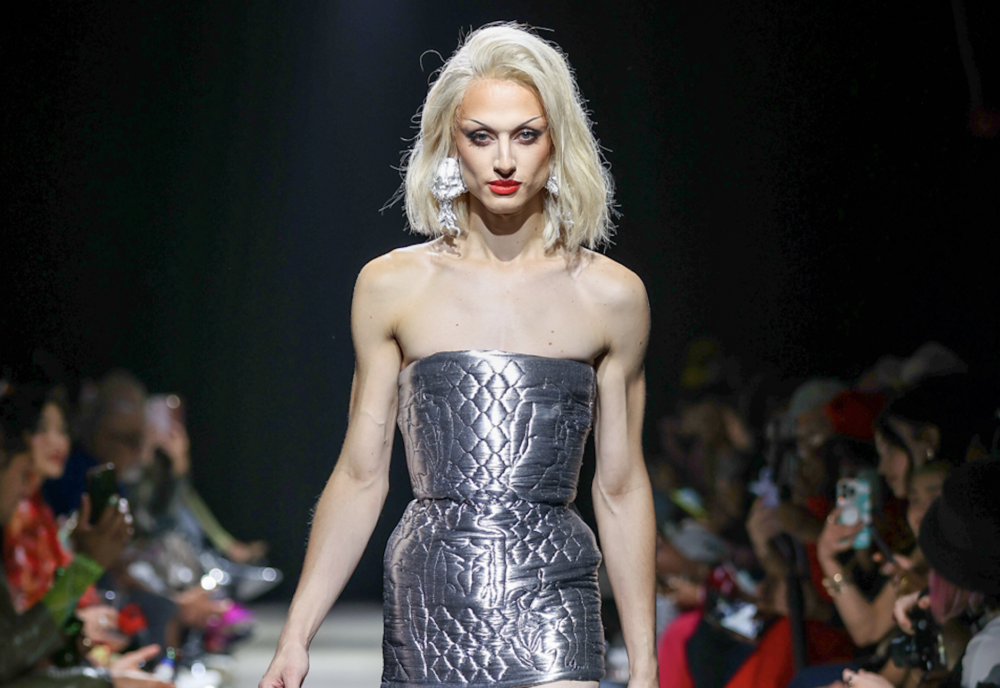Mario Fugnitto is the visionary behind Toronto-based eponymous brand Fugnitto; a blend of Italian heritage and underground queer aesthetics which encompasses a fusion of the designers unique cultural vantage. This season, Fugnitto sent structural denim, distressed leather and a myriad of iconic fashion motifs down the runway. We sat down with the burgeoning creative to talk Canadian fashion, artistic muse, and the designer’s latest collection for Fashion Art Toronto.
Tell us about your collection for FAT this season.
I met Laye at the Fashion Canada party early this season and was so inspired by her song “Last Cigarette” that I quickly arranged to showcase at FAT, thanks to Lily and Vanja for accommodating my last-minute inquiry (3 weeks before the fall showcase).
Cigarettes, fire, Kate Moss, and homeroom were themes running through the collection. What was the inspiration behind this narrative?
Kate Moss is always an inspiration in fashion. I grew up during one of the best times for supermodels like Naomi Campbell (there was a photo of her smoking laser-etched into a denim gown that didn’t make the runway) and Kate, which inspired me to pursue fashion. Watching them own the fashion runway to nightlife (queers invented it) was exactly where I wanted to end up.

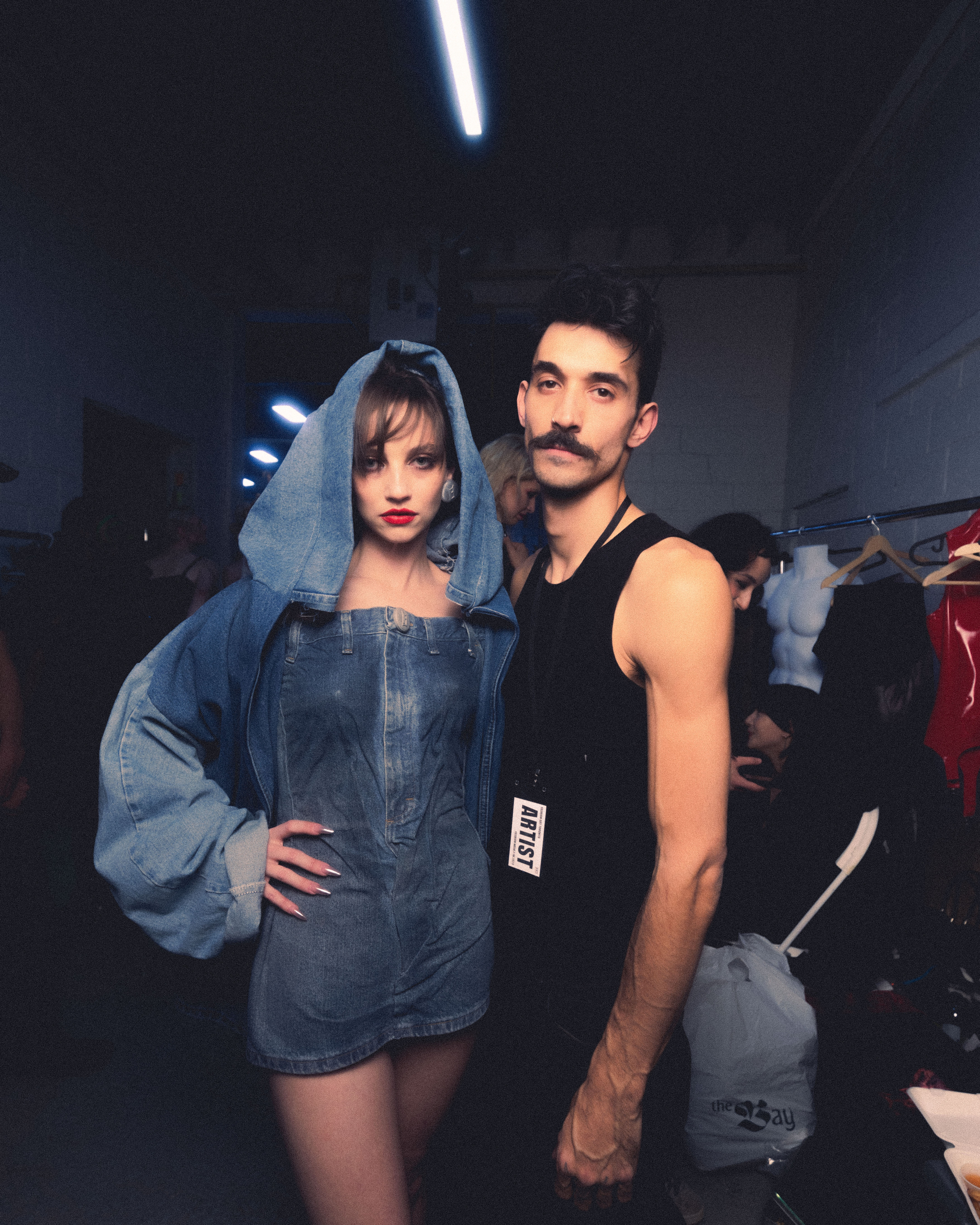
Leather and denim are recurrent in your designs. How do these materials express your brand’s identity and what draws you to them?
My leather forms have grown in denim due to the trend denim is currently having (y2k vibes). I usually don’t like working with denim as its production wastes so much water, so environmentally, I choose to have a limited silhouette in denim on the runway. Leather has always been a staple as I love to show structural references in my work, and having textiles that can be molded helps. I try to avoid anything polyester (plastic) in my textiles as they don’t always feel as nice as leathers or cotton-linen yarns. I do use plastic in my textiles; I’m just aware of what textiles are made of.
The quilted motifs featuring bodies and faces in this collection make a strong visual statement. What inspired these patterns?
I was working with a local drag artist (Tiffany Boxx) for pride this past season, and we created a look (in denim, FML) with a quilted body design identical to the silver lamé that was worn by another local drag artist/makeup artist, Viktor Peters. We really just wanted to express our love for the male form, which produced this fun design. The lamé versions on the runway were made the night before; I thought they would catch the light much better in that textile.


How do you approach themes of gender and fluidity in your designs?
Fashion is really for anyone. It’s made for everyone. Any age, gender can express themselves at any level. It’s kind of that simple.
Could you discuss how Kate Moss’s influence is reintegrated within your brand’s aesthetic?
Kate Moss smoking is showcased twice in my garments. One woven into a “luxe” (sparkle) knit sweater featuring her returning to the runway smoking for Marc Jacobs/LV closing, creating a huge fashion reaction. Need I say more about why I was inspired by this moment? Which then again, being the night before my show, I created the lamé quilt and added her smoking into it as her inspiration comes from my muse.
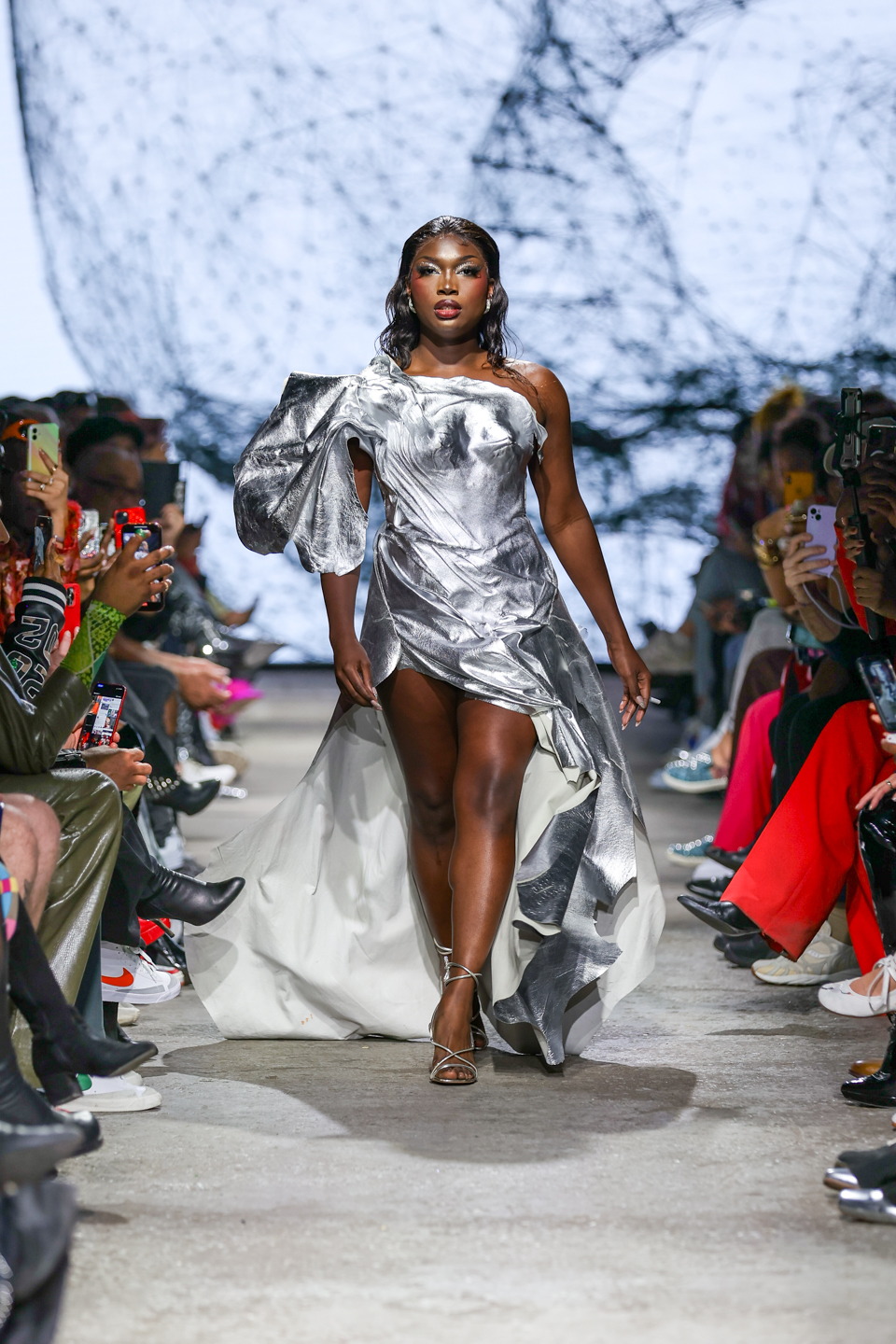
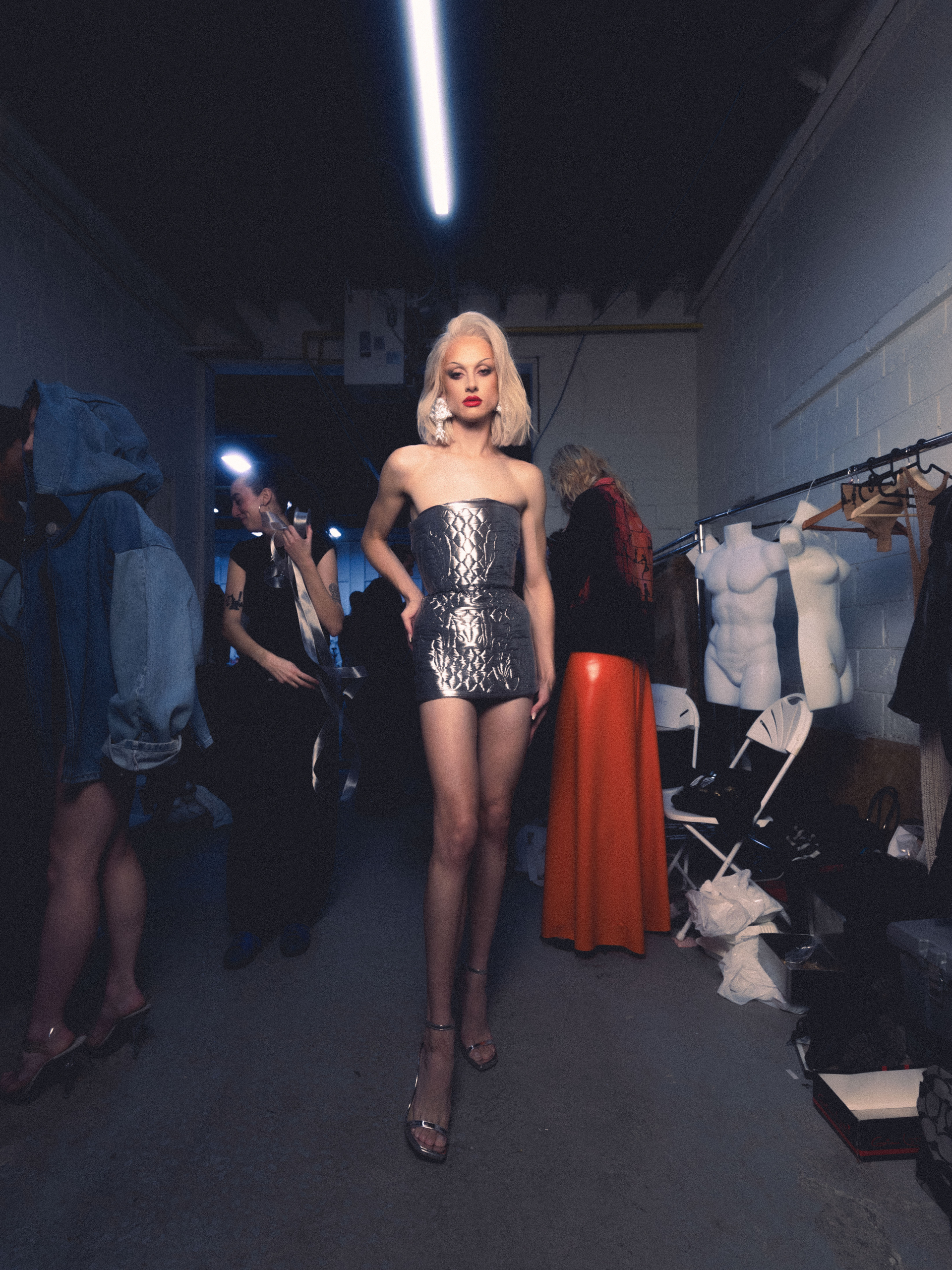
Do you have a muse or consistent source of inspiration for your design processes?
I would have to say my muse, Haley McPherson. Being able to debut a new look on her (she got her haircut into a pixie the day of my show) is what’s fun about having her around. She is always there for me and is the first to just accept my fashion direction. Having her love and support is why I keep making clothing. I will dress her forever.
What is your perspective on the evolution of the Toronto fashion scene and its impact on emerging talents?
I think it’s for sure an emerging scene. There has been a lot of Toronto talent like Dsquared and Mikhael Kale whose designs have been seen all over the world. It’s just unfortunate that we have to leave Toronto to break out of being emerging talent. I feel like Toronto and Canada need more funding for the arts in general. There is zero support for any fashion funding here.
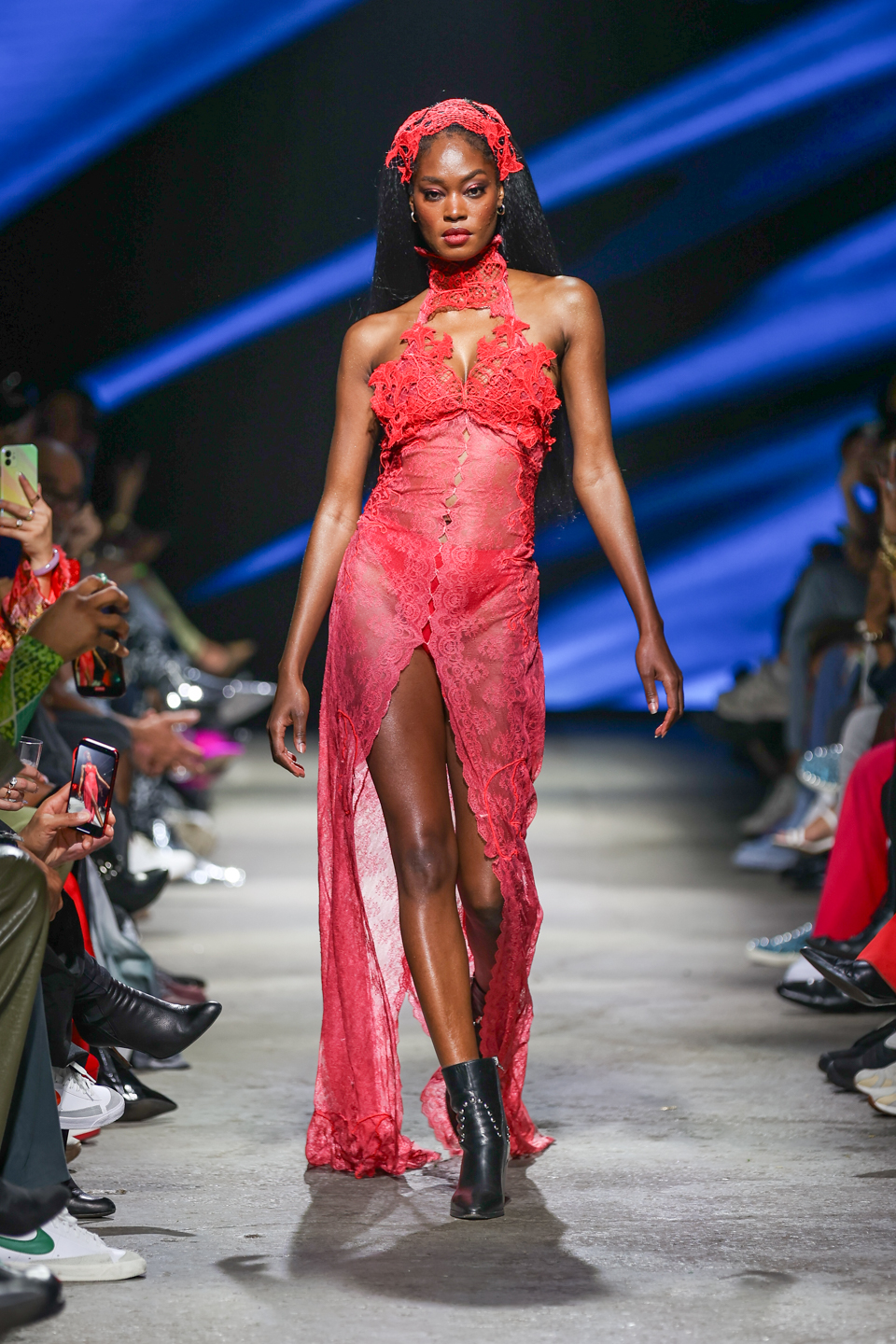
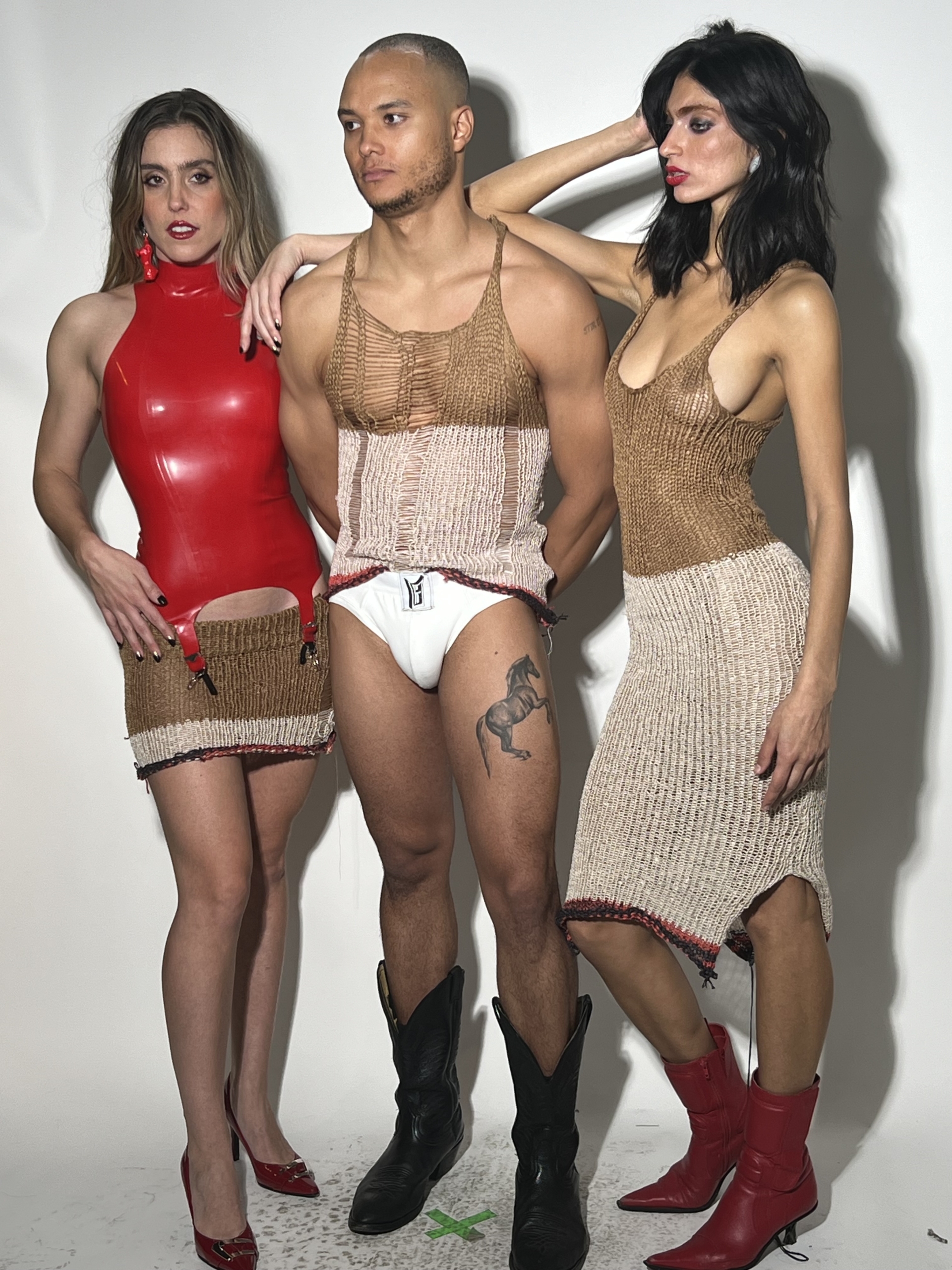
What changes or developments do you foresee for emerging designers in Toronto and across Canada?
I hope we get access to funding. Places like FAT that Vanja produced need to stay alive. It’s the only place for my work to be shown, which has skyrocketed my career over the last year.
What core elements or values define Fugnitto’s identity?
Dreaming, community, and structure.
How does the Toronto fashion scene influence your design aesthetic, and creative processes, and are there particular cultural aspects impacting your narratives?
The Toronto fashion scene is unique in that it’s very small and connected. It’s a bit of a lottery with the more ‘connected’ fashion people, but we do all work and support each other a lot. Some of the stylists here are the best in the world. There are a few who have connected me to great opportunities just because they saw me showcased at FAT. Again, community, without Vanja, I wouldn’t even have the chance I’ve gotten this year with all the work from Toronto talent.
What’s next for the future of Fugnitto?
Like in two weeks? I’m dressing a few clients for the Canfar event, as well as the performance. I have a few magazine shoots coming out with amazing talent that I can’t wait to be released. Already working on some custom looks for some huge red carpets next year with an amazing model! I cannot wait for that moment, to be honest.

Cody is the Editor in Chief and senior contributor at liminul.
He is a photography aficionado, fashion enthusiast, avid Lana Del Rey fan, and lover of all things aesthetically pleasing.

